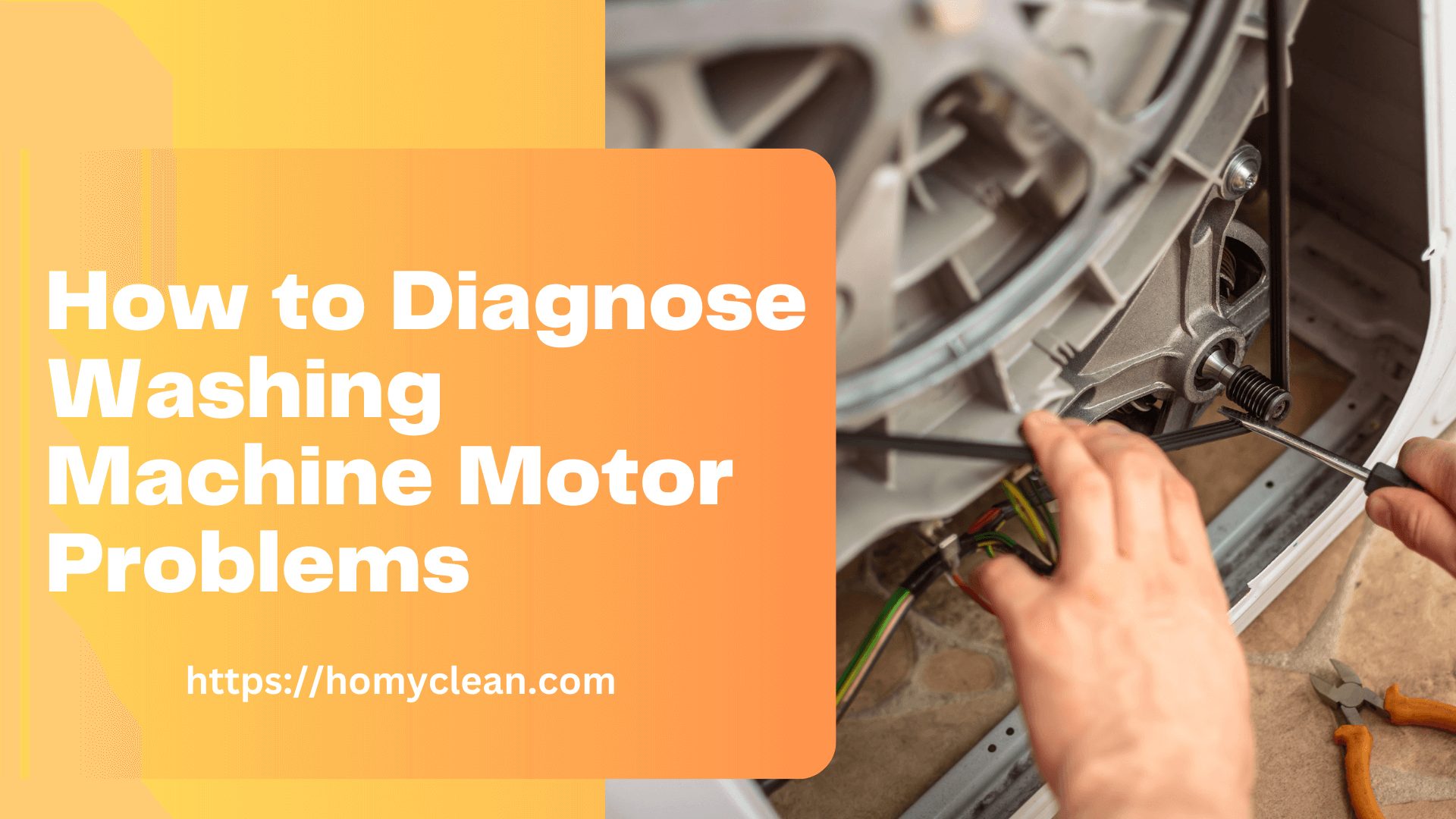The washing machine motor drives the agitator and controls the overall operation of the machine. However, like any mechanical device, washing machine motors can encounter problems. In this article, we will guide you through how to diagnose washing machine motor problems, enabling you to troubleshoot and resolve common issues.
5 Signs of Washing Machine Motor Problems
The washing machine motor can manifest various signs when it encounters issues. Pay attention to the following symptoms that may show motor problems:
- The washing machine cannot start or turn on.
- Unusual noises, such as grinding or screeching, come from the machine.
- The agitator or drum cannot spin or rotate at an inconsistent speed.
- The machine doesn’t complete its cycles or pauses mid-cycle.
- Burning smell or smoke coming from the machine during operation.
Similar: 14 Signs Washing Machine Needs to Repair
How to Diagnose Washing Machine Motor Problems and Troubleshoot Guide and Solution
To diagnose and troubleshoot washing machine motor problems, follow these steps:
1. Checking for Power Supply Problems
Before inspecting the motor, ensure that the washing machine receives an adequate power supply. Check the power cord, electrical outlet, and circuit breaker to prevent any electrical issues.
2. Examining the Motor Drive Belt
A worn-out or broken drive belt can prevent the motor from functioning correctly. Inspect the drive belt for signs of wear, such as cracks, fraying, or stretching. If you notice any issues, the drive belt may need replacement.
3. Inspecting the Motor Coupler
The motor coupler connects the motor to the transmission. Over time, it can wear out or break, resulting in a faulty connection. Examine the motor coupler for visible damage, such as cracks or broken pieces. Replace the motor coupler.
4. Testing the Lid Switch
The lid switch ensures that the washing machine operates only when the lid is closed. If the lid switch is faulty, it can interrupt the motor’s operation. Test the lid switch using a multimeter to determine if it functions correctly. Replace the lid switch if it’s defective.
5. Verifying the Motor Windings
The motor windings are crucial components of the motor that generate the rotational motion. Use a multimeter to measure the resistance of the motor windings. If the readings deviate significantly from the manufacturer’s specifications, it shows a problem with the motor windings.
6. Fixing Washing Machine Motor Problems
Depending on the specific issue, you may need to perform the following actions to fix washing machine motor problems:
7. Replacing a Faulty Drive Belt
You should replace the drive belt with a new one if it’s damaged or worn out. Follow the manufacturer’s instructions or ask for professional help if necessary. Refer to the manufacturer’s instructions or seek professional help if needed.
8. Repairing or Replacing the Motor Coupler
In case of a faulty motor coupler, consider repairing it. Otherwise, replace it with a new one to restore the motor’s proper function.
9. Fixing the Lid Switch
A defective lid switch may require replacement. Consult the washing machine’s manual or contact the manufacturer for guidance on replacing the lid switch.
10. Calling a Professional
If you cannot diagnose or fix the washing machine motor problems yourself, it’s advisable to seek professional help. Certified technicians have the expertise to identify and resolve complex motor issues.
Related Topic: How to Identify if the Motor Coupler Broken in Washing Machine
If you want to read all the laundry related articles, visit here. Visit here for the 10 best washing machine cleaner, visit homyclean for Products Review.
Conclusion
Diagnosing and resolving washing machine motor problems is essential to ensuring your appliance’s smooth operation and longevity. By understanding the signs of motor issues and following the troubleshooting steps outlined in this article, you can save time and money by resolving minor problems yourself. However, if you encounter complex or severe motor problems, it’s best to consult a Moter Problem professional technician for help.
FAQs About Diagnosing The Washing Machine Motor Problems
Can I replace the washing machine motor myself?
Replacing a washing machine motor is a complex task requiring technical expertise. It’s recommended to seek professional help for motor replacement.
Why does my washing machine make a loud noise during the operation?
Loud noises during operation can indicate various issues, including motor problems, unbalanced loads, or worn-out components. A proper diagnosis is necessary to determine the exact cause.
Can a faulty motor affect other parts of the washing machine?
A faulty motor can impact other parts of the washing machine’s functionality. For example, if the motor fails to spin the drum, it can prevent the machine from completing its cycles.
Is preventive maintenance necessary for washing machine motors?
Yes, preventive maintenance is crucial to keeping your washing machine motor in optimal condition and preventing potential problems. Regular cleaning, proper loading, and using the correct detergent are essential aspects of maintenance.
What should I do if I smell a burning odor from my washing machine motor?
If you notice a burning smell or see smoke from the washing machine, immediately turn off the appliance and unplug it from the power source. Contact a professional technician to inspect and repair the motor.





